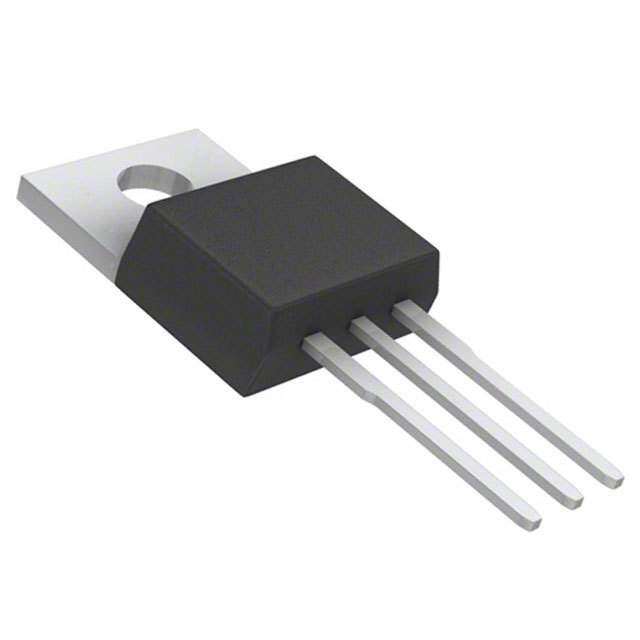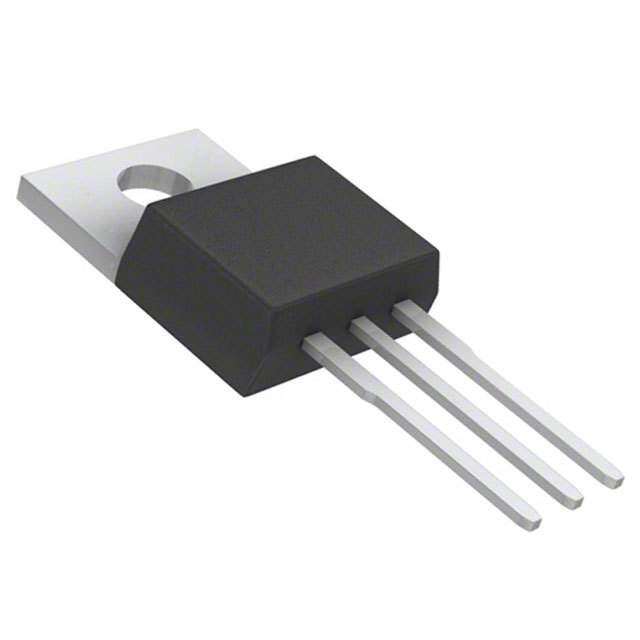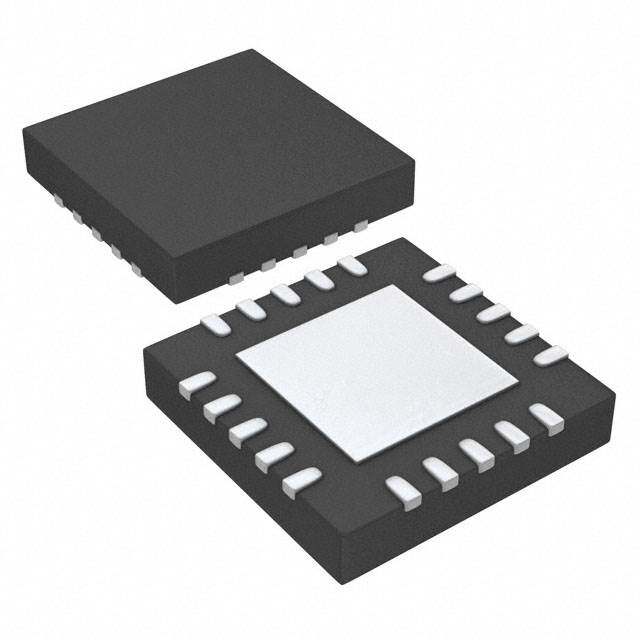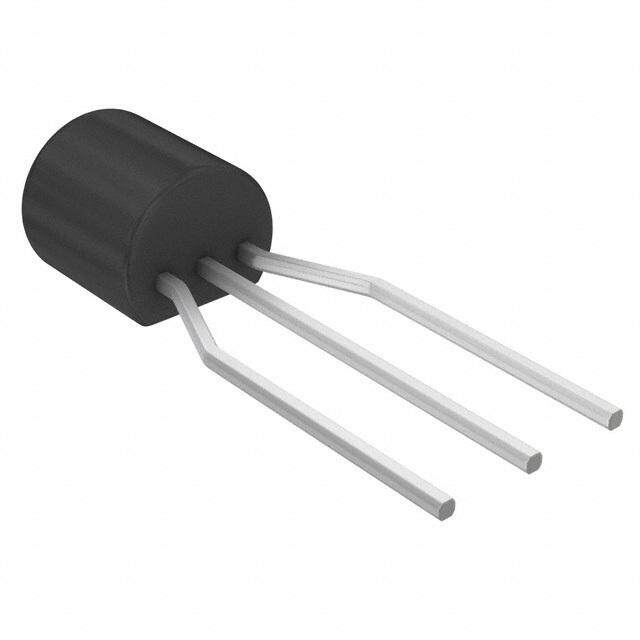ICGOO在线商城 > 集成电路(IC) > PMIC - 稳压器 - 线性 > NCP4641H050T1G
- 型号: NCP4641H050T1G
- 制造商: ON Semiconductor
- 库位|库存: xxxx|xxxx
- 要求:
| 数量阶梯 | 香港交货 | 国内含税 |
| +xxxx | $xxxx | ¥xxxx |
查看当月历史价格
查看今年历史价格
NCP4641H050T1G产品简介:
ICGOO电子元器件商城为您提供NCP4641H050T1G由ON Semiconductor设计生产,在icgoo商城现货销售,并且可以通过原厂、代理商等渠道进行代购。 NCP4641H050T1G价格参考。ON SemiconductorNCP4641H050T1G封装/规格:PMIC - 稳压器 - 线性, Linear Voltage Regulator IC Positive Fixed 1 Output 150mA SOT-89-5。您可以下载NCP4641H050T1G参考资料、Datasheet数据手册功能说明书,资料中有NCP4641H050T1G 详细功能的应用电路图电压和使用方法及教程。
| 参数 | 数值 |
| 产品目录 | 集成电路 (IC)半导体 |
| 描述 | IC REG LDO 5V 0.15A SOT89-5线性稳压器 Wide Input Voltage Range LDO |
| 产品分类 | |
| 品牌 | ON Semiconductor |
| 产品手册 | |
| 产品图片 |
|
| rohs | 符合RoHS无铅 / 符合限制有害物质指令(RoHS)规范要求 |
| 产品系列 | 电源管理 IC,线性稳压器,ON Semiconductor NCP4641H050T1G- |
| 数据手册 | |
| 产品型号 | NCP4641H050T1G |
| PSRR/纹波抑制—典型值 | 27 dB |
| 产品种类 | |
| 供应商器件封装 | SOT-89-5 |
| 其它名称 | NCP4641H050T1G-ND |
| 包装 | 带卷 (TR) |
| 商标 | ON Semiconductor |
| 安装类型 | 表面贴装 |
| 安装风格 | SMD/SMT |
| 封装 | Reel |
| 封装/外壳 | SOT-89-5/6 |
| 封装/箱体 | SOT-89-5 |
| 工作温度 | -40°C ~ 150°C |
| 工厂包装数量 | 1000 |
| 最大功率耗散 | 900 mW |
| 最大工作温度 | + 150 C |
| 最大输入电压 | 36 V |
| 最小工作温度 | - 40 C |
| 最小输入电压 | 4 V |
| 极性 | Positive |
| 标准包装 | 1,000 |
| 电压-跌落(典型值) | 0.2V @ 20mA |
| 电压-输入 | 高达 36V |
| 电压-输出 | 5V |
| 电流-输出 | 150mA |
| 电流-限制(最小值) | - |
| 稳压器拓扑 | 正,固定式 |
| 稳压器数 | 1 |
| 系列 | NCP4641 |
| 线路调整率 | 0.02 % / V |
| 负载调节 | 35 mV |
| 输出电压 | 5 V |
| 输出电流 | 0.15 A |
| 输出端数量 | 1 |
| 输出类型 | Fixed |









- 商务部:美国ITC正式对集成电路等产品启动337调查
- 曝三星4nm工艺存在良率问题 高通将骁龙8 Gen1或转产台积电
- 太阳诱电将投资9.5亿元在常州建新厂生产MLCC 预计2023年完工
- 英特尔发布欧洲新工厂建设计划 深化IDM 2.0 战略
- 台积电先进制程称霸业界 有大客户加持明年业绩稳了
- 达到5530亿美元!SIA预计今年全球半导体销售额将创下新高
- 英特尔拟将自动驾驶子公司Mobileye上市 估值或超500亿美元
- 三星加码芯片和SET,合并消费电子和移动部门,撤换高东真等 CEO
- 三星电子宣布重大人事变动 还合并消费电子和移动部门
- 海关总署:前11个月进口集成电路产品价值2.52万亿元 增长14.8%








PDF Datasheet 数据手册内容提取
NCP4641 150 mA, Wide Input Range, Voltage Regulator The NCP4641 is a CMOS 150 mA linear voltage regulator with high input voltage and ultra−low supply current. It incorporates multiple protection features such as peak current limit, short circuit current limit and thermal shutdown to ensure a very robust device. www.onsemi.com A high maximum input voltage tolerance of 50 V and a wide MARKING temperature range make the NCP4641 suitable for a variety of DIAGRAMS demanding applications. Features • Operating Input Voltage Range: 4 V to 36 V XXX • XMM Output Voltage Range: 2.0 to 12.0 V (0.1 steps) SOIC6−TL • ±2% Output Voltage Accuracy CASE 751BR 1 • Output Current: min 150 mA (V = 8 V, V = 5 V) IN OUT • Line Regulation: 0.05%/V • Peak Current Limit Circuit 1 • Short Current Limit Circuit XXX • Thermal Shutdown Circuit XMM • Available in SOT−89−5 and SOIC6−TLPackage SOT−89 5 • CASE 528AB These are Pb−Free Devices Typical Applications • XXXX = Specific Device Code Power source for home appliances MM = Date Code • Power source for car audio equipment, navigation system • (Note: Microdot may be in either location) Power source for notebooks, digital TVs, cordless phones and private LAN systems • Power source for office equipment machines such as copiers, ORDERING INFORMATION printers, facsimiles, scanners, projectors, etc. See detailed ordering and shipping information on page 12 of this data sheet. NCP4641x VIN VOUT VIN VOUT C1 C2 CE 100n 100n GND Figure 1. Typical Application Schematic © Semiconductor Components Industries, LLC, 2014 1 Publication Order Number: October, 2014 − Rev. 1 NCP4641/D
NCP4641 VIN VOUT Internal VR Vref Current Limit Short Protection CE Thermal Shutdown GND Figure 2. Simplified Schematic Block Diagram PIN FUNCTION DESCRIPTION Pin No. Pin No. SOT89 SOIC6−TL Pin Name Description 5 6 VIN Input pin 2 2 GND Ground pin, all ground pins must be connected together when it is mounted on board 4 4 GND Ground pin, all ground pins must be connected together when it is mounted on board − 5 GND Ground pin, all ground pins must be connected together when it is mounted on board 3 3 CE Chip enable pin (“H” active) 1 1 VOUT Output pin www.onsemi.com 2
NCP4641 ABSOLUTE MAXIMUM RATINGS Rating Symbol Value Unit Input Voltage VIN −0.3 to 50 V Peak Input Voltage (Note 1) VIN 60 V Output Voltage VOUT −0.3 to VIN + 0.3 ≤ 50 V Chip Enable Input VCE −0.3 to VIN + 0.3 ≤ 50 V Output Current IOUT 250 mA Power Dissipation SOT−89 PD 900 mW Power Dissipation SOIC6−TL 1700 Junction Temperature TJ −40 to 150 °C Storage Temperature TSTG −55 to 125 °C ESD Capability, Human Body Model (Note 2) ESDHBM 2000 V ESD Capability, Machine Model (Note 2) ESDMM 200 V Stresses exceeding those listed in the Maximum Ratings table may damage the device. If any of these limits are exceeded, device functionality should not be assumed, damage may occur and reliability may be affected. 1. Duration time = 200 ms 2. This device series incorporates ESD protection and is tested by the following methods: ESD Human Body Model tested per AEC−Q100−002 (EIA/JESD22−A114) ESD Machine Model tested per AEC−Q100−003 (EIA/JESD22−A115) Latchup Current Maximum Rating tested per JEDEC standard: JESD78. THERMAL CHARACTERISTICS Rating Symbol Value Unit Thermal Characteristics, SOT−89 R(cid:2)JA 111 °C/W Thermal Resistance, Junction−to−Air Thermal Characteristics, SOIC6−TL R(cid:2)JA 59 °C/W Thermal Resistance, Junction−to−Air www.onsemi.com 3
NCP4641 ELECTRICAL CHARACTERISTICS TA = 25°C Parameter Test Conditions Symbol Min Typ Max Unit Operating Input Voltage VIN 4 36 V Output Voltage VIN = VOUT + 3 V, IOUT = 1 mA VOUT x0.98 x1.02 V Output Voltage Temp. Coeffi- VIN = VOUT + 3 V, IOUT = 1 mA, TA = −40 to ±100 ppm/°C cient 105°C Line Regulation VIN = VOUT + 1.5 V to 36 V, IOUT = 1 mA LineReg 0.05 0.20 %/V Load Regulation VIN = VOUT + 3 V, 2.0 V ≤ VOUT < 5.0 V LoadReg 10 25 mV IOUT = 1 mA to 40 mA 5.0 V ≤ VOUT < 12.0 V 20 35 Dropout Voltage IOUT = 20 mA 2.0 V ≤ VOUT < 3.7 V VDO (Note 3) V 3.7 V ≤ VOUT < 4.0 V 0.35 0.60 4.0 V ≤ VOUT < 5.0 V 0.25 0.40 5.0 V ≤ VOUT < 12.0 V 0.20 0.35 Output Current VIN = VOUT + 3 V 2.0 V ≤ VOUT < 3.0 V IOUT 100 mA 3.0 V ≤ VOUT < 5.0 V 120 5.0 V ≤ VOUT < 12.0 V 150 Short Current Limit VOUT = 0 V ISC 50 mA Quiescent Current VIN = VOUT + 3 V, IOUT = 0 mA IQ 9 20 (cid:3)A Standby Current VIN = 36 V, VCE = 0 V ISTB 0.1 1 (cid:3)A CE Pin Threshold Voltage CE Input Voltage “H” VCEH 1.5 V CE Input Voltage “L” VCEL 0.3 Thermal Shutdown Temperature TSD 150 °C Thermal Shutdown Release TSR 125 °C Temperature Power Supply Rejection Ratio VIN = 6 V, VOUT = 3.0 V, IOUT = 30 mA, f = 1 kHz PSRR 27 dB Output Noise Voltage VOUT = 3.0 V, IOUT = 30 mA, f = 10 Hz to VN 112 (cid:3)Vrms 100 kHz Product parametric performance is indicated in the Electrical Characteristics for the listed test conditions, unless otherwise noted. Product performance may not be indicated by the Electrical Characteristics if operated under different conditions. 3. Dropout voltage for 2.0 V ≤ VOUT < 3.7 V can be computed by this formula: VDO = 4 V − VOUTSET www.onsemi.com 4
NCP4641 TYPICAL CHARACTERISTICS 3.5 6.0 3.0 5.0 7.0 V 2.5 VIN = 5.0 V 5.5 V 6.5 V VIN = 8.5 V 7.5 V 4.0 V) 2.0 V) 8.0 V (T (T 3.0 U 6.0 V U O 1.5 O V V 2.0 1.0 1.0 0.5 0.0 0.0 0 50 100 150 200 250 300 0 50 100 150 200 250 300 IOUT (mA) IOUT (mA) Figure 3. Output Voltage vs. Output Current Figure 4. Output Voltage vs. Output Current 3.0 V Version (T = 25 (cid:2)C) 5.0 V Version (T = 25 (cid:2)C) J J 9.0 2.5 10.5 V 8.0 11 V 105°C 7.0 11.5 V 2.0 6.0 TJ = 25°C V) 5.0 10 V V) 1.5 (UT (O VO 4.0 VD 1.0 −40°C 3.0 2.0 0.5 1.0 0.0 0.0 0 50 100 150 200 250 300 0 25 50 75 100 125 150 IOUT (mA) IOUT (mA) Figure 5. Output Voltage vs. Output Current Figure 6. Dropout Voltage vs. Output Current 8.0 V Version (T = 25 (cid:2)C) 3.0 V Version J 2.5 2.5 2.0 2.0 1.5 1.5 V) 105°C V) (DO TJ = 25°C (DO V 1.0 V 1.0 TJ = 25°C 105°C −40°C 0.5 0.5 −40°C 0.0 0.0 0 25 50 75 100 125 150 0 25 50 75 100 125 150 IOUT (mA) IOUT (mA) Figure 7. Dropout Voltage vs. Output Current Figure 8. Dropout Voltage vs. Output Current 5.0 V Version 8.0 V Version www.onsemi.com 5
NCP4641 TYPICAL CHARACTERISTICS 3.05 5.05 3.04 VIN = 5.0 V 5.04 VIN = 8.0 V 3.03 5.03 3.02 5.02 V) 3.01 V) 5.01 (T 3.00 (T 5.00 U U O O V 2.99 V 4.99 2.98 4.98 2.97 4.97 2.96 4.96 2.95 4.95 −40 −20 0 20 40 60 80 100 −40 −20 0 20 40 60 80 100 TJ, JUNCTION TEMPERATURE (°C) TJ, JUNCTION TEMPERATURE (°C) Figure 9. Output Voltage vs. Temperature, Figure 10. Output Voltage vs. Temperature, 3.0 V Version 5.0 V Version 8.10 16 8.08 VIN = 11 V 14 8.06 VOUT = 5.0 V 12 8.04 10 V) 8.02 A) (UT 8.00 (cid:3) (D 8 8.0 V O N V 7.98 G I 6 3.0 V 7.96 4 7.94 2 7.92 7.90 0 −40 −20 0 20 40 60 80 100 0 5 10 15 20 25 30 35 TJ, JUNCTION TEMPERATURE (°C) VIN, INPUT VOLTAGE (V) Figure 11. Output Voltage vs. Temperature, Figure 12. Supply Current vs. Input Voltage 8.0 V Version 14 3.5 12 3.0 10 VOUT = 3.0 V 2.5 1 mA A) 8 V) 2.0 (cid:3) (D 5.0 V (UT N 6 8.0 V O 1.5 20 mA G V I 4 1.0 IOUT = 40 mA 2 0.5 0 0.0 −40 −20 0 20 40 60 80 100 0 5 10 15 20 25 30 35 TJ, JUNCTION TEMPERATURE (°C) VIN, INPUT VOLTAGE (V) Figure 13. Supply Current vs. Temperature Figure 14. Output Voltage vs. Input Voltage, 3.0 V Version www.onsemi.com 6
NCP4641 TYPICAL CHARACTERISTICS 6.0 9.0 8.0 5.0 7.0 1 mA 4.0 6.0 1 mA V) 20 mA V) 5.0 (T3.0 (T OU OU 4.0 20 mA V V 2.0 3.0 IOUT = 40 mA 2.0 1.0 IOUT = 40 mA 1.0 0.0 0.0 0 5 10 15 20 25 30 35 0 5 10 15 20 25 30 35 VIN, INPUT VOLTAGE (V) VIN, INPUT VOLTAGE (V) Figure 15. Output Voltage vs. Input Voltage, Figure 16. Output Voltage vs. Input Voltage, 5.0 V Version 8.0 V Version 100 100 90 90 80 80 70 70 dB) 60 IOUT = 1 mA dB) 60 RR ( 50 RR ( 50 IOUT = 1 mA S 40 S 40 P P 30 30 30 mA 30 mA 20 100 mA 20 100 mA 10 10 0 0 0.01 0.1 1 10 100 1000 0.01 0.1 1 10 100 1000 FREQUENCY (kHz) FREQUENCY (kHz) Figure 17. PSRR, 3.0 V Version, V = 6.0 V Figure 18. PSRR, 5.0 V Version, V = 8.0 V IN IN 100 12 90 10 80 70 z) 8 R (dB) 5600 √/Hms 6 R Vr PS 40 IOUT = 1 mA (cid:3)V (N 4 30 20 30 mA 2 10 100 mA 0 0 0.01 0.1 1 10 100 1000 0.01 0.1 1 10 100 1000 FREQUENCY (kHz) FREQUENCY (kHz) Figure 19. PSRR, 8.0 V Version, V = 11 V Figure 20. Output Voltage Noise, 3.0 V Version, IN V = 6.0 V, I = 30 mA IN OUT www.onsemi.com 7
NCP4641 TYPICAL CHARACTERISTICS 25 50 45 20 40 35 z) z) H 15 H 30 √ √ /s /s m m 25 Vr Vr (cid:3) (N 10 (cid:3) (N 20 V V 15 5 10 5 0 0 0.01 0.1 1 10 100 1000 0.01 0.1 1 10 100 1000 FREQUENCY (kHz) FREQUENCY (kHz) Figure 21. Output Voltage Noise, 5.0 V Version, Figure 22. Output Voltage Noise, 8.0 V version, V = 8.0 V, I = 30 mA V = 11.0 V, I = 30 mA IN OUT IN OUT 12 10 8 6 (V)UT 4.50 24 (V)N O VI V 4.00 3.50 3.00 2.50 2.00 0 0.2 0.4 0.6 0.8 1.0 1.2 1.4 1.6 1.8 2.0 t ((cid:3)s) Figure 23. Line Transients, 3.0 V Version, t = t = 5 (cid:2)s, I = 1 mA R F OUT 14 12 10 8 (V)UT 6.00 46 (V)N VO 5.50 VI 5.00 4.50 4.00 3.50 0 0.2 0.4 0.6 0.8 1.0 1.2 1.4 1.6 1.8 2.0 t ((cid:3)s) Figure 24. Line Transients, 5.0 V Version, t = t = 5 (cid:2)s, I = 1 mA R F OUT www.onsemi.com 8
NCP4641 TYPICAL CHARACTERISTICS 17 15 13 11 (V)UT9.00 79 (V)N O VI V 8.50 8.00 7.50 7.00 6.50 0 0.2 0.4 0.6 0.8 1.0 1.2 1.4 1.6 1.8 2.0 t ((cid:3)s) Figure 25. Line Transients, 8.0 V Version, t = t = 5 (cid:2)s, I = 1 mA R F OUT 200 150 100 50 V) 0 A) (UT1.24 (mT O U V 1.22 O I 1.20 1.18 1.16 1.14 0 20 40 60 80 100 120 140 160 180 200 t ((cid:3)s) Figure 26. Load Transients, 3.0 V Version, I = 1 – 20 mA, t = t = 50 (cid:2)s, V = 6.0 V OUT R F IN 200 150 100 50 V) 0 A) (UT2.83 (mT O U V 2.81 O I 2.79 2.77 2.75 2.73 0 20 40 60 80 100 120 140 160 180 200 t ((cid:3)s) Figure 27. Load Transients, 5.0 V Version, I = 1 – 20 mA, t = t = 50 (cid:2)s, V = 8.0 V OUT R F IN www.onsemi.com 9
NCP4641 TYPICAL CHARACTERISTICS 200 150 100 50 V) 0 A) (UT 5.05 (mT O U V 5.03 O I 5.01 4.99 4.97 4.95 0 20 40 60 80 100 120 140 160 180 200 t ((cid:3)s) Figure 28. Load Transients, 8.0 V Version, I = 1 – 20 mA, t = t = 50 (cid:2)s, V = 11.0 V OUT R F IN 8 Chip Enable 6 4 2 0 V) V) V (OUT 34 IOUT = 20 mA V (CE 2 IOUT = 1 mA 1 IOUT = 150 mA 0 −1 0 50 100 150 200 250 300 350 400 450 500 t ((cid:3)s) Figure 29. Start−up, 3.0 V Version, V = 6.0 V IN 10 Chip Enable 8 6 4 V) 2 V) V (OUT 68 IOUT = 20 mA 0 V (CE 4 IOUT = 1 mA 2 IOUT = 150 mA 0 −2 0 50 100 150 200 250 300 350 400 450 500 t ((cid:3)s) Figure 30. Start−up, 5.0 V Version, V = 8.0 V IN www.onsemi.com 10
NCP4641 TYPICAL CHARACTERISTICS 16 Chip Enable 12 8 4 0 V (V)OUT 68 IOUT = 20 mA V (V)CE 4 IOUT = 1 mA 2 IOUT = 150 mA 0 −2 0 50 100 150 200 250 300 350 400 450 500 t ((cid:3)s) Figure 31. Start−up, 8.0 V Version, V = 11.0 V IN www.onsemi.com 11
NCP4641 APPLICATION INFORMATION A typical application circuit for NCP4641 series is shown connected to CE pin. Do not keep CE pin not connected or in Figure 32. between VCEH and VCEL voltage levels. Otherwise output voltage would be unstable or indefinite and unexpected NCP4641x would flow internally. VIN VOUT VIN VOUT Thermal C1 C2 As a power across the IC increase, it might become CE 100n GND 100n necessary to provide some thermal relief. The maximum power dissipation supported by the device is dependent upon board design and layout. Mounting pad configuration on the PCB, the board material, and also the ambient temperature affect the rate of temperature increase for the part. When the device has good thermal conductivity Figure 32. Typical Application Schematic through the PCB the junction temperature will be relatively low in high power dissipation applications. The IC includes internal thermal shutdown circuit that Input Decoupling Capacitor (C1) The device is stable without any input capacitance, but if stops operation of regulator, if junction temperature is input line is long and has high impedance or if more stable higher than 150°C. After that, when junction temperature operation is needed, input capacitor C1 should be connected decreases below 125°C, the operation of voltage regulator as close as possible to the IC. Recommended range of input would restart. While high power dissipation condition is, the capacitor value is 100 nF to 10 (cid:3)F. regulator starts and stops repeatedly and protects itself against overheating. Output Decoupling Capacitor (C2) The NCP4641 can work stable without output capacitor, PCB Layout but if faster response and higher stability reserve is needed, Pins number 2 and 4 of SOT89−5 package and pins output capacitor should be connected as close as possible to number 2, 4 and 5 of SOIC6−TL must be wired to the GND the device. Recommended range of output capacitance is plane while it is mounted on board. Make VIN and GND 100 nF to 10 (cid:3)F. Larger values of output capacitance and lines sufficient. If their impedance is high, noise pickup or lower ESR improves dynamic parameters. unstable operation may result. Connect capacitors C1 and C2 as close as possible to the IC, and make wiring as short Enable Operation as possible. The enable pin CE may be used for turning the regulator on and off. The device is activated when high level is ORDERING INFORMATION Nominal Output Device Voltage Description Marking Package Shipping† NCP4641H030T1G 3.0 V Enable High M030 SOT89−5 1000 / Tape & Reel (Pb−Free) NCP4641H033T1G 3.3 V Enable High M033 SOT−89−5 1000 / Tape & Reel (Pb−Free) NCP4641H050T1G 5.0 V Enable High M050 SOT89−5 1000 / Tape & Reel (Pb−Free) NCP4641H080T1G 8.0 V Enable High M080 SOT89−5 1000 / Tape & Reel (Pb−Free) †For information on tape and reel specifications, including part orientation and tape sizes, please refer to our Tape and Reel Packaging Specifications Brochure, BRD8011/D. *To order other package and voltage variants, please contact your ON Semiconductor sales representative. www.onsemi.com 12
NCP4641 PACKAGE DIMENSIONS SOIC6 (HSOP6) CASE 751BR ISSUE A NOTES: D b1 A 1. DIMENSIONING AND TOLERANCING PER ASME F Y14.5M, 1994. 2. CONTROLLING DIMENSION: MILLIMETERS 3. DIMENSION b AND b1 DO NOT INCLUDE DAMBAR 6 4 A3 PROTRUSION. ALLOWAQBLE PROTRUSION SHALL BE 0.10 mm IN EXCESS OF MAXIMUM MATERIAL CONDITION. H E 4. DIMENSIONS D AND E DO NOT INCLUDE MOLD FLASH, PROTRUSIONS, OR GATE BURRS. MOLD 1 3 L2 L C SEATING FNLOATS EHX, CPEREODT R0U.1S5I OmNmS P, EORR SGIADTEE. DBIUMRERNSS ISOHNASL DL 4Xb DETAIL A PLANE 5. ADNATDU EM ASR AE A DNEDT EBR AMRIEN EDDE TAETR DMAITNUEMD FA.T DATUM F. B 0.12 M C A-B D 6. A1 IS DEFINED AS THE VERTICAL DISTANCE FROM THE SEATING PLANE TO THE LOWEST POINT ON THE PACKAGE BODY. MILLIMETERS D 6X DIM MIN MAX 0.10 C A 1.45 1.85 A1 0.05 0.25 A3 0.15 0.30 b 0.30 0.50 b1 1.57 1.77 A1 A e C PSLEAANTIENG DETAIL A ED 43..7720 54..3120 e 3.81 BSC H 5.70 6.30 RECOMMENDED L 0.40 0.80 SOLDERING FOOTPRINT* L2 0.25 BSC 3.81 PITCH 6X 1.05 6.40 1 2X1.87 4X 0.60 DIMENSIONS: MILLIMETERS *For additional information on our Pb−Free strategy and soldering details, please download the ON Semiconductor Soldering and Mounting Techniques Reference Manual, SOLDERRM/D. www.onsemi.com 13
NCP4641 PACKAGE DIMENSIONS SOT−89, 5 LEAD CASE 528AB ISSUE O D NOTES: 1. DIMENSIONING AND TOLERANCING PER ASME Y14.5M, 1994. 2. CONTROLLING DIMENSION: MILLIMETERS. 3. LEAD THICKNESS INCLUDES LEAD FINISH. 4. DIMENSIONS D AND E DO NOT INCLUDE MOLD FLASH, PROTRUSIONS, OR GATE BURRS. E H 5. DIMENSIONS L, L2, L3, L4, L5, AND H ARE MEA- SURED AT DATUM PLANE C. MILLIMETERS DIM MIN MAX 1 A 1.40 1.60 b 0.32 0.52 b1 0.37 0.57 TOP VIEW c 0.30 0.50 D 4.40 4.60 D2 1.40 1.80 E 2.40 2.60 c e 1.40 1.60 A H 4.25 4.45 L 1.10 1.50 0.10 C L2 0.80 1.20 L3 0.95 1.35 C SIDE VIEW L4 0.65 1.05 L5 0.20 0.60 RECOMMENDED e e MOUNTING FOOTPRINT* b1 b L2 4X0.57 1.75 L 1 2 3 1.50 0.45 2.79 L5 4.65 5 4 L3 L4 D2 1.65 1.30 1 BOTTOM VIEW 2X 0.62 2X1.50 DIMENSIONS: MILLIMETERS *For additional information on our Pb−Free strategy and soldering details, please download the ON Semiconductor Soldering and Mounting Techniques Reference Manual, SOLDERRM/D. ON Semiconductor and the are registered trademarks of Semiconductor Components Industries, LLC (SCILLC) or its subsidiaries in the United States and/or other countries. SCILLC owns the rights to a number of patents, trademarks, copyrights, trade secrets, and other intellectual property. A listing of SCILLC’s product/patent coverage may be accessed at www.onsemi.com/site/pdf/Patent−Marking.pdf. SCILLC reserves the right to make changes without further notice to any products herein. SCILLC makes no warranty, representation or guarantee regarding the suitability of its products for any particular purpose, nor does SCILLC assume any liability arising out of the application or use of any product or circuit, and specifically disclaims any and all liability, including without limitation special, consequential or incidental damages. “Typical” parameters which may be provided in SCILLC data sheets and/or specifications can and do vary in different applications and actual performance may vary over time. All operating parameters, including “Typicals” must be validated for each customer application by customer’s technical experts. SCILLC does not convey any license under its patent rights nor the rights of others. SCILLC products are not designed, intended, or authorized for use as components in systems intended for surgical implant into the body, or other applications intended to support or sustain life, or for any other application in which the failure of the SCILLC product could create a situation where personal injury or death may occur. Should Buyer purchase or use SCILLC products for any such unintended or unauthorized application, Buyer shall indemnify and hold SCILLC and its officers, employees, subsidiaries, affiliates, and distributors harmless against all claims, costs, damages, and expenses, and reasonable attorney fees arising out of, directly or indirectly, any claim of personal injury or death associated with such unintended or unauthorized use, even if such claim alleges that SCILLC was negligent regarding the design or manufacture of the part. SCILLC is an Equal Opportunity/Affirmative Action Employer. This literature is subject to all applicable copyright laws and is not for resale in any manner. PUBLICATION ORDERING INFORMATION LITERATURE FULFILLMENT: N. American Technical Support: 800−282−9855 Toll Free ON Semiconductor Website: www.onsemi.com Literature Distribution Center for ON Semiconductor USA/Canada P.O. Box 5163, Denver, Colorado 80217 USA Europe, Middle East and Africa Technical Support: Order Literature: http://www.onsemi.com/orderlit Phone: 303−675−2175 or 800−344−3860 Toll Free USA/Canada Phone: 421 33 790 2910 Fax: 303−675−2176 or 800−344−3867 Toll Free USA/Canada Japan Customer Focus Center For additional information, please contact your local Email: orderlit@onsemi.com Phone: 81−3−5817−1050 Sales Representative www.onsemi.com NCP4641/D 14
Mouser Electronics Authorized Distributor Click to View Pricing, Inventory, Delivery & Lifecycle Information: O N Semiconductor: NCP4641H030T1G NCP4641H050T1G NCP4641H080T1G NCP4641H033T1G
 Datasheet下载
Datasheet下载
